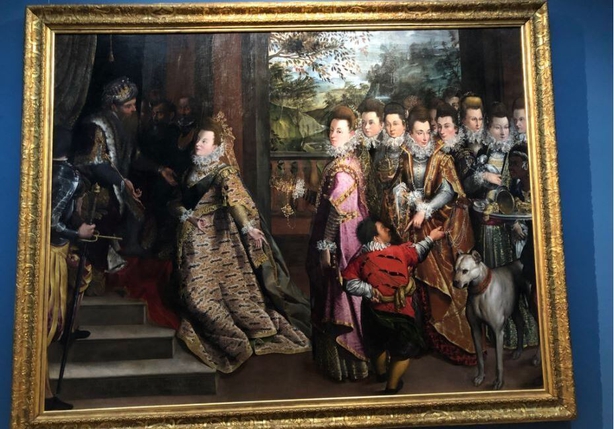The Renaissance masterpiece 'The Visit of the Queen of Sheba to King Solomon' has been unveiled at the National Gallery of Ireland following an 18-month conservation project.
The piece, painted by Lavinia Fontana, is the largest surviving painting by one of the most renowned female artists of the Renaissance. She was one of the most successful female painters in the history of Western art.
Funding for the conservation of the painting was provided through a grant from the Bank of America. The treatment of the artwork addressed structural issues as well as aesthetic ones.
Cracking and instability in the 400-year-old structure has been addressed, the gallery said, so that the painting can be safely displayed.

After the removal of layers of dull and yellow varnish many previously obscured details were also uncovered during the conservation treatment.
This included an inscription, dated from the year 1599, on the base of an ornamental clock held by one of the figures in the composition.
Scientific analysis has identified the pigments Fontana used and given new insights into her workshop practice.
The artwork is on display in Room 27 at the National Gallery of Ireland, as part of the permanent collection, where entry is free.
